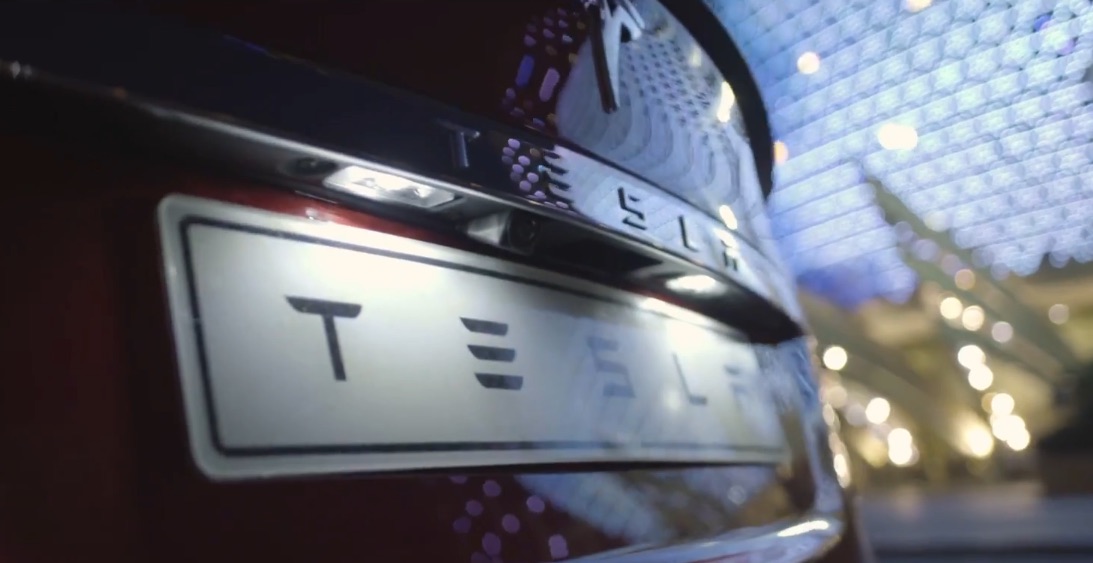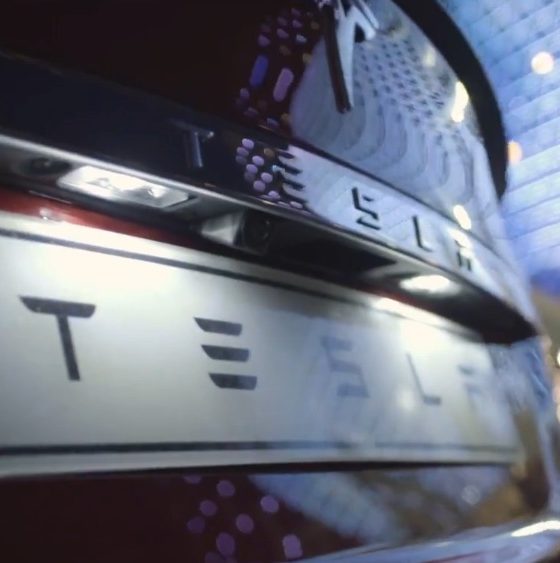

Investor's Corner
Dissecting Jim Chanos’ short seller arguments about Tesla
All innovative companies attract negative press coverage, but the tide of anti-Tesla scare stories and misinformation has reached such preposterous proportions that it has become a story in itself (remember, colleagues, we’re supposed to report the news, not make it). It’s widely believed that much of the mud, especially the articles that focus on financial and stock-market topics, originates with short sellers, who have collectively bet some $12 billion against the California carmaker.
Perhaps the best-known and most articulate of the short sellers is Jim Chanos, a hedge fund operator who distinguished himself by calling attention to Enron’s shenanigans back in 2000. Chanos has made no secret of his disdain for Tesla, or his interest in profiting from its demise. Chanos figures prominently in Matt Taibbi’s 2014 book, The Divide: American Injustice in the Age of the Wealth Gap. A recent series of posts on the Tesla Motors Club forum argues that Chanos and other shorts are following a tried-and-true playbook that they’ve used to attack other companies in the past.
Enter Galileo Russell, a young independent stock analyst, who became something of a hero among Teslaphiles when Elon Musk granted him a lot of quality time on a now-famous conference call. In a new video, Russell answers Chanos’s bearish arguments about Tesla point by point.
Above: Galileo Russell takes on infamous Tesla short Jim Chanos (Youtube: HyperChange TV)
Chanos is no mindless naysayer or anonymous comment-section troll. “He has a reputation for being one of Wall Street’s best and sharpest short sellers and for good reason,” says Galileo. “His hedge fund Kynikos Associates [the name comes from the Greek for “cynic”] has a track record that has crushed the market.” Furthermore, Chanos has been “very vocal and public and transparent about his short of Tesla for years – he’s done a ton of interviews on CNBC and Bloomberg explaining his short rationale, so this gives me a ton of material to really understand what his thinking is.”
Galileo has “a ton of respect” for Chanos, but thinks “he is wrong on this trade.” In this video, which is worth watching all the way through, the exuberant young pundit answers the diehard bear’s long list of anti-Tesla arguments one by one.
Chanos and others have made much of Tesla’s supposedly high rate of executive departures (“rats leaving a sinking ship”). However, according to Galileo, “He has cherry-picked the names of 39 Tesla executives who’ve left over the past two years.” Tesla has 37,000 employees. The average tenure of departing execs has been about 4.6 years – not far off the 5.3-year average term of execs at the largest US companies. Mr. Russell also reminds us of a certain group of leaders who haven’t jumped ship, and don’t seem likely to: CEO Elon Musk (15 years with the company); CTO JB Straubel (14 years); CFO Deepak Ahuja (10 years) and Senior Design Director Franz von Holzhausen (8 years).
Is Tesla “structurally unprofitable,” as Chanos claims? Maybe, but so was a certain other growing tech company called Amazon. Is Tesla indulging in creative accounting by not including its R&D expenses in gross margins? Nope – unlike legacy OEMs, most of Tesla’s R&D goes for future products. Tesla’s accounting isn’t deceptive, says Galileo – it’s just more like that of a tech company than a traditional automaker.
Galileo goes on to address several more of Chanos’s anti-Tesla points: coming competition from the legacy automakers (almost no one in the EV industry takes this threat seriously – Big Auto has made it abundantly clear that its main agenda is to hold back the tide of electrification, not join it); delays in rolling out Autopilot, the Semi and the Roadster; and even a far-fetched notion that Elon Musk is planning to step down as CEO.
In every case, Mr. Russell marshals detailed facts and figures to support his rebuttals. Even if you’re a Tesla skeptic, you’ll be forced to admit that this is a virtuoso performance by an extremely well-informed and insightful analyst.
===
Note: Article originally published on evannex.com by Charles Morris; Source: HyperChange TV

Investor's Corner
Tesla stock closes at all-time high on heels of Robotaxi progress

Tesla stock (NASDAQ: TSLA) closed at an all-time high on Tuesday, jumping over 3 percent during the day and finishing at $489.88.
The price beats the previous record close, which was $479.86.
Shares have had a crazy year, dipping more than 40 percent from the start of the year. The stock then started to recover once again around late April, when its price started to climb back up from the low $200 level.
This week, Tesla started to climb toward its highest levels ever, as it was revealed on Sunday that the company was testing driverless Robotaxis in Austin. The spike in value pushed the company’s valuation to $1.63 trillion.
Tesla Robotaxi goes driverless as Musk confirms Safety Monitor removal testing
It is the seventh-most valuable company on the market currently, trailing Nvidia, Apple, Alphabet (Google), Microsoft, Amazon, and Meta.
Shares closed up $14.57 today, up over 3 percent.
The stock has gone through a lot this year, as previously mentioned. Shares tumbled in Q1 due to CEO Elon Musk’s involvement with the Department of Government Efficiency (DOGE), which pulled his attention away from his companies and left a major overhang on their valuations.
However, things started to rebound halfway through the year, and as the government started to phase out the $7,500 tax credit, demand spiked as consumers tried to take advantage of it.
Q3 deliveries were the highest in company history, and Tesla responded to the loss of the tax credit with the launch of the Model 3 and Model Y Standard.
Additionally, analysts have announced high expectations this week for the company on Wall Street as Robotaxi continues to be the focus. With autonomy within Tesla’s sights, things are moving in the direction of Robotaxi being a major catalyst for growth on the Street in the coming year.
Elon Musk
Tesla needs to come through on this one Robotaxi metric, analyst says
“We think the key focus from here will be how fast Tesla can scale driverless operations (including if Tesla’s approach to software/hardware allows it to scale significantly faster than competitors, as the company has argued), and on profitability.”

Tesla needs to come through on this one Robotaxi metric, Mark Delaney of Goldman Sachs says.
Tesla is in the process of rolling out its Robotaxi platform to areas outside of Austin and the California Bay Area. It has plans to launch in five additional cities, including Houston, Dallas, Miami, Las Vegas, and Phoenix.
However, the company’s expansion is not what the focus needs to be, according to Delaney. It’s the speed of deployment.
The analyst said:
“We think the key focus from here will be how fast Tesla can scale driverless operations (including if Tesla’s approach to software/hardware allows it to scale significantly faster than competitors, as the company has argued), and on profitability.”
Profitability will come as the Robotaxi fleet expands. Making that money will be dependent on when Tesla can initiate rides in more areas, giving more customers access to the program.
There are some additional things that the company needs to make happen ahead of the major Robotaxi expansion, one of those things is launching driverless rides in Austin, the first city in which it launched the program.
This week, Tesla started testing driverless Robotaxi rides in Austin, as two different Model Y units were spotted with no occupants, a huge step in the company’s plans for the ride-sharing platform.
Tesla Robotaxi goes driverless as Musk confirms Safety Monitor removal testing
CEO Elon Musk has been hoping to remove Safety Monitors from Robotaxis in Austin for several months, first mentioning the plan to have them out by the end of 2025 in September. He confirmed on Sunday that Tesla had officially removed vehicle occupants and started testing truly unsupervised rides.
Although Safety Monitors in Austin have been sitting in the passenger’s seat, they have still had the ability to override things in case of an emergency. After all, the ultimate goal was safety and avoiding any accidents or injuries.
Goldman Sachs reiterated its ‘Neutral’ rating and its $400 price target. Delaney said, “Tesla is making progress with its autonomous technology,” and recent developments make it evident that this is true.
Investor's Corner
Tesla gets bold Robotaxi prediction from Wall Street firm
Last week, Andrew Percoco took over Tesla analysis for Morgan Stanley from Adam Jonas, who covered the stock for years. Percoco seems to be less optimistic and bullish on Tesla shares, while still being fair and balanced in his analysis.

Tesla (NASDAQ: TSLA) received a bold Robotaxi prediction from Morgan Stanley, which anticipates a dramatic increase in the size of the company’s autonomous ride-hailing suite in the coming years.
Last week, Andrew Percoco took over Tesla analysis for Morgan Stanley from Adam Jonas, who covered the stock for years. Percoco seems to be less optimistic and bullish on Tesla shares, while still being fair and balanced in his analysis.
Percoco dug into the Robotaxi fleet and its expansion in the coming years in his latest note, released on Tuesday. The firm expects Tesla to increase the Robotaxi fleet size to 1,000 vehicles in 2026. However, that’s small-scale compared to what they expect from Tesla in a decade.
Tesla expands Robotaxi app access once again, this time on a global scale
By 2035, Morgan Stanley believes there will be one million Robotaxis on the road across multiple cities, a major jump and a considerable fleet size. We assume this means the fleet of vehicles Tesla will operate internally, and not including passenger-owned vehicles that could be added through software updates.
He also listed three specific catalysts that investors should pay attention to, as these will represent the company being on track to achieve its Robotaxi dreams:
- Opening Robotaxi to the public without a Safety Monitor. Timing is unclear, but it appears that Tesla is getting closer by the day.
- Improvement in safety metrics without the Safety Monitor. Tesla’s ability to improve its safety metrics as it scales miles driven without the Safety Monitor is imperative as it looks to scale in new states and cities in 2026.
- Cybercab start of production, targeted for April 2026. Tesla’s Cybercab is a purpose-built vehicle (no steering wheel or pedals, only two seats) that is expected to be produced through its state-of-the-art unboxed manufacturing process, offering further cost reductions and thus accelerating adoption over time.
Robotaxi stands to be one of Tesla’s most significant revenue contributors, especially as the company plans to continue expanding its ride-hailing service across the world in the coming years.
Its current deployment strategy is controlled and conservative to avoid any drastic and potentially program-ruining incidents.
So far, the program, which is active in Austin and the California Bay Area, has been widely successful.








